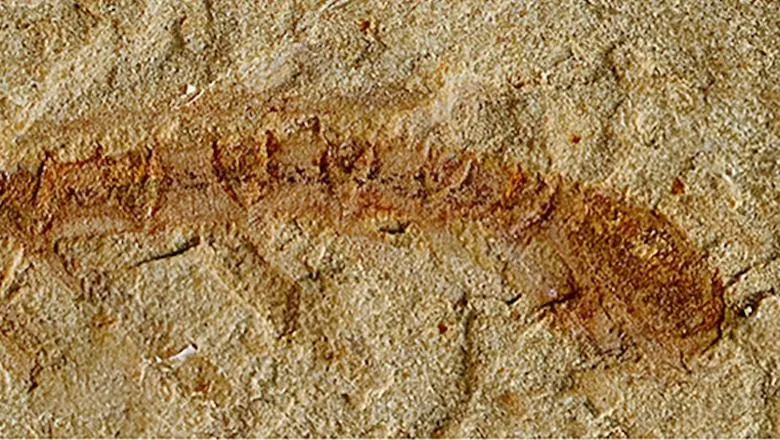“Until very recently, the common understanding was ‘brains don't fossilize,’ so you would not expect to find a fossil with a preserved brain in the first place. This animal is so small you would not even dare to look at it in hopes of finding a brain.”
Dr Frank Hirth, reader of evolutionary neuroscience at King's IoPPN
24 November 2022
525-million-year-old fossil defies textbook explanation for brain evolution
New research from the Institute of Psychiatry, Psychology & Neuroscience (IoPPN) at King’s College London, in partnership with the University of Arizona (UoA), has solved a century-old debate over how the brains of arthropods evolved over the course of more than five hundred million years.

The study, published in Science, was jointly led by Dr Frank Hirth of King’s IoPPN, and Professor Nicholas Strausfeld from UoA; it resolves a long and heated debate about the origin and composition of the brain in arthropods – the most species-rich phylum in the animal kingdom that includes insects, crustaceans, spiders and other arachnids, as well as other lineages such as millipedes and centipedes.
The new study provides a detailed analysis of fossilized remains of an armoured lobopodian known as Cardiodictyon catenulum.
The size of the fossil – measuring about 1.5cm in total – meant that it was not possible to x-ray the sample. Instead, researchers used a technique called “chromatic filtering” of high-resolution digitalized images to filter out light at different wavelengths. The technique revealed a segmented nervous system in the animal’s trunk and a brain comprising three confluent domains in an unsegmented head .
The researchers compared the head and brain morphology of the fossil to other known fossils, as well as living arthropods. By combining the detailed paleomorphological analysis of the fossil with known gene expression patterns of living arthropods, they identified a cerebral ground pattern that has persisted from the Cambrian period 525 million years ago until the present. Dr Hirth continued, “We have identified a common signature of all brains and how they formed. We realized that each brain domain and its corresponding features are specified by the same combination of genes, irrespective of the species we looked at. This identifies a common genetic ground plan for making a brain."
Hirth and Strausfeld suggest that the morphological and genetic interpretations described in their study may be applicable to other creatures outside of arthropods and their immediate relatives. This has important implications when comparing the nervous system of arthropods with those of vertebrates, which show comparable architectures in which the forebrain and midbrain are genetically and developmentally distinct from the trunk’s spinal cord, they said.
Professor Strausfeld said their findings also offer a message of continuity at a time when the planet is changing dramatically under the influence of climatic shifts.
"At a time when major geological and climatic events were reshaping the planet, simple marine animals such as Cardiodictyon gave rise to the world's most diverse group of organisms – the euarthropods – that eventually spread to every emergent habitat on Earth, but which are now being threatened by our own ephemeral species."
The Lower Cambrian Lobopodian Cardiodictyon Resolves the Origin of Euarthropod Brains (DOI10.1126/science.abn6264) (NICHOLAS J. STRAUSFELD, XIANGUANG HOU, MARCEL E. SAYRE, FRANK HIRTH) was published in Science.
For more information, please contact Patrick O’Brien (Senior Media Officer)

